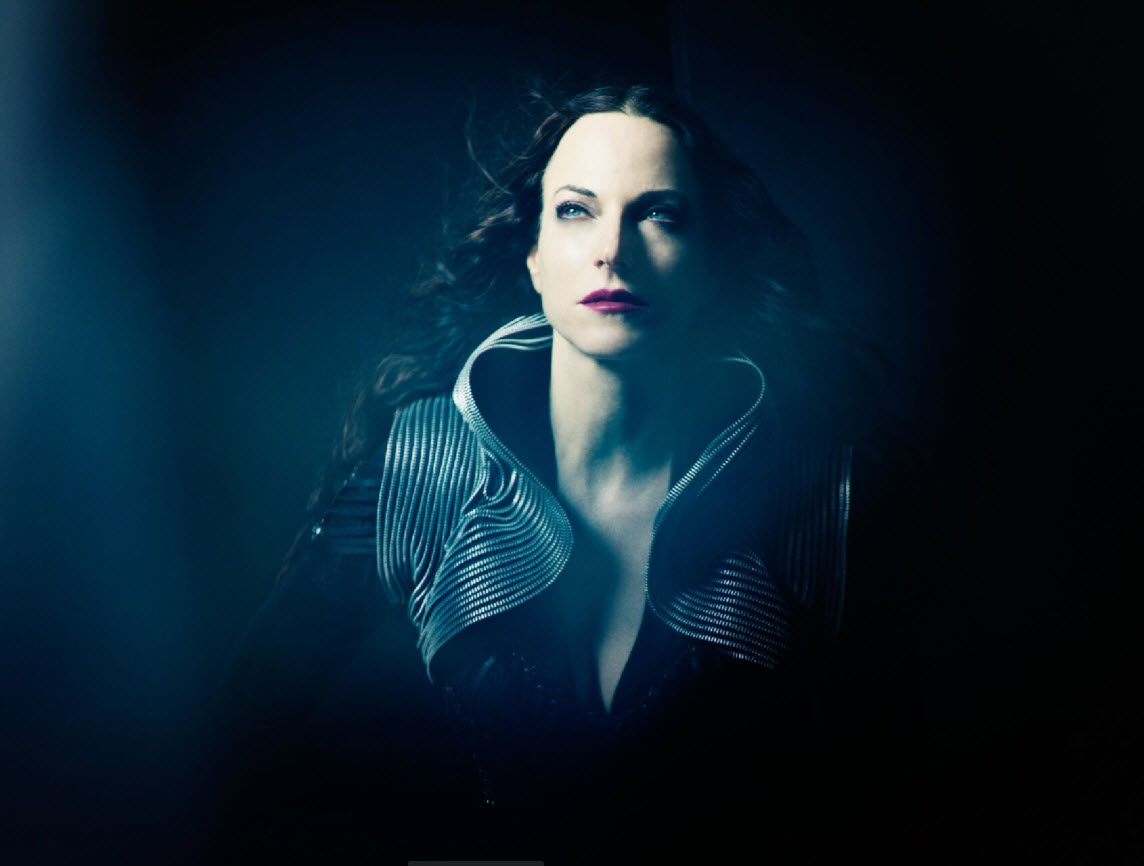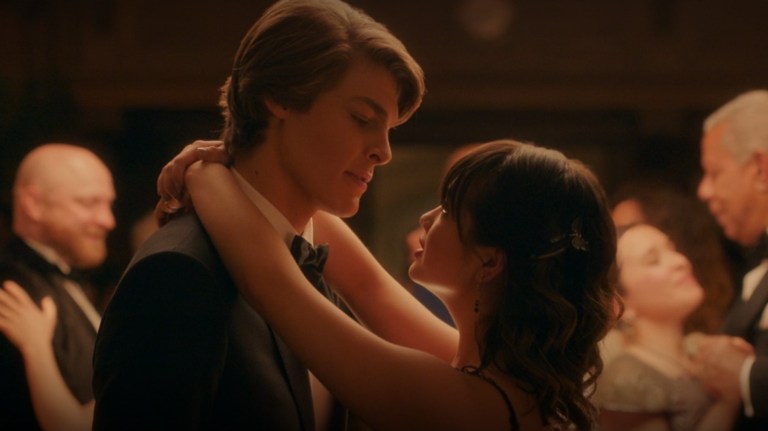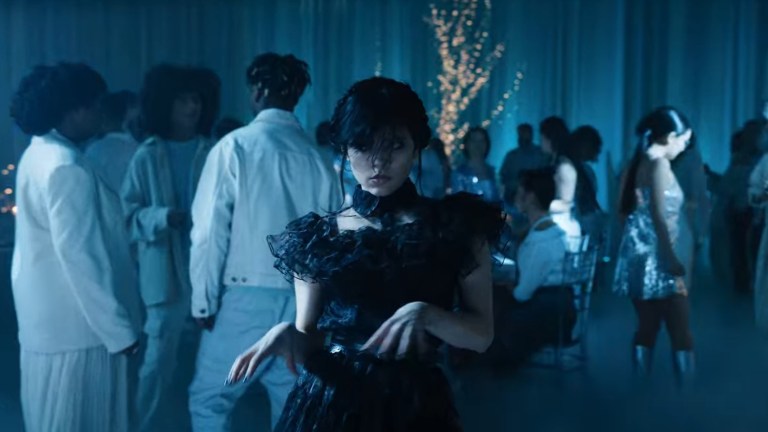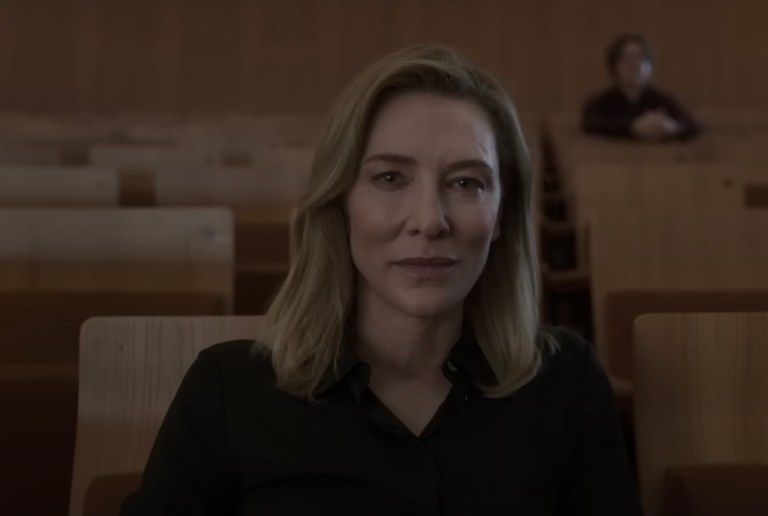Maya Beiser: ‘Singing With The Cello’
Drawing on her childhood on a kibbutz—fears of violence and the grace of music—cellist Maya Beiser embarks on personal exploration, 'TranceClassical.'


‘To Take Back Our Own Listening’
On the 10th album to feature her singularly self-aware work, the Israeli-born American cellist Maya Beiser has embarked on a more personal path, one she says she intends to keep exploring going forward.
TranceClassical from Innova Records releases on July 29, but in the week leading up to that, you can hear music from it in a special arrangement with Apple Music. Hit Play and read on.
Long an icon on the contemporary classical performance scene, Beiser’s work is familiar to listeners of Q2 Music, the 24/7 streaming service of WQXR in New York—the music source so many good writers keep near them. Listen, for example, to Beiser and Steven Schick in Osvaldo Golijov’s hovering, aching Mariel, performed last summer at the Ojai Music Festival.
What makes the new TranceClassical so penetrating is that it represents a new step for Beiser—a step inward, not outward. Not only will writers appreciate the gutsy exploration of childhood fears and discovery she’s researching here, but you’ll find when you read our conversation that she appreciates the way writers work and understands it in the context of her own process.
Maya Beiser
Beiser’s work in this new and intensely personal selection of performances is enhanced at many points by her vocal work. Those who have followed her for a time will remember that her highly regarded TED Talk of 2011 found her performing Steve Reich’s unforgettable Cello Counterpoint—with herself, as it were.
Now, she sings to you, a siren of her own language, her breath as much a player as the tenor of her voice itself. You get a hint of this first in the Laurie Anderson-like electronic whimsy of Hide and Seek by Imogen Heap and arranged by Beiser. More focused vocal work sighs and floats above the walking restlessness of the cello in the Lou Reed Heroin, arranged by David Lang, with its stunning lyric:
I don’t know where I’m going
But I am going to try for the kingdom if I can
Because it makes me feel like I’m a woman
when i put a spike into my vein
 If you listen to nothing else on this CD, listen to the timeless, spacious grace of her work in Kol Nidrei by Arab-American composer Momammad Fairouz. Beiser here is singing in Aramaic, and here are the notes she shares on it:
If you listen to nothing else on this CD, listen to the timeless, spacious grace of her work in Kol Nidrei by Arab-American composer Momammad Fairouz. Beiser here is singing in Aramaic, and here are the notes she shares on it:
A prayer
About human imperfection
About stumbling and making mistakes
About humility
Of the prayer
The words are personal
The melody is universal
The words divide, the music unites.
Her note on the closing piece, O Virtus Sapientae, a work she has arranged based on music attributed to the 12th century mystic Hildegard von Bingen, seems to capture exactly what Beiser has set out to do in this project by starting with the terrors and warmth of her kibbutz girlhood. She quotes von Bingen:
We cannot live in a world that is not our own, in a world that is interpreted for us by others. An interpreted world is not a home. Part of the terror is to take back our own listening, to use our own voice, to see our own light.”
‘To Use Our Own Voice’
Thought Catalog: I think my favorite tracks on TranceClassical are those in which we hear your own voice as well as your cello’s voice. Does it make sense if I say that in singing, you seem to own these pieces in a particularly deep, integral way? What’s it like for you to sing with your cello? What can we say about such “friction between a cello and voice,” as you write so perceptively in your notes?

Maya Beiser: You know, for years I was very uncomfortable with my voice. I have a sister who is an opera singer and has a beautiful and pristine lyric soprano voice–this always made me very self-conscious. My voice is rather unadorned, much deeper and kind of raspy. I never imagined that I would sing with my cello.
But here is the thing, when I play the cello, I sing internally. I sing in my mind and that translates to the instrument. The cello becomes an extension of my body and my whole being. So in a way, singing with the cello is a very natural evolution for me.
When I was a student at Yale, I met a dear friend and one of my mentors, the Dutch composer Louis Andriessen. Louis gave me a score to a beautiful piece he wrote for a singing—and acting—cellist, called La Voce. I told him I don’t know how to sing and play and he just smiled and said, “give it a try.” This piece opened the door for me to experimenting with vocalizing with the cello. This was before I began to dive deep into electronics and multiplying my cello live and in recordings, and I became intrigued by the process and the possibilities of utilizing another dimension in the live performance.
I think what I like the most about singing with my cello is that it takes me to another realm as an artist – it takes me out of the need create a “perfect” cello sound. It allows me to put aside all the preconceived notions and ingrained perceptions about beauty and perfection that my classical music education instilled in me, and be more authentically, just me. It allows for a more vulnerable and direct connection with my audience.
Maya Beiser
TC: You’ve talked about the “washed-out image” in your mind of yourself as a child on the sofa at home, listening to Bach’s Air on G. That nearness of your childhood memories seems to pervade so much of this album’s work. Am I right in hearing a kind of wonderment, a wide-eyed approach to most of the pieces? I guess for the adult Maya, this translates into exploration, doesn’t it? So much discovery seems to be underway in this work for you?
MB: Yes. I think in many ways we are not just the sum of our early experiences and memories, our cultural imprints, our childhood landscape, but rather we are what we made in response to them, what we became in spite of them–what we have created in our mind in order to make sense of it all.
For me, it was a very scary beginning in this world, and music became my escape and my empowerment; the place where I could travel to imaginary provinces, where I could be myself without any boundaries. The place I could explore beyond the realm of the daily reality–beyond the fear, the war, the insecurities of a little girl, feeling misplaced and lost. And every day I remind myself that this–being an artist–is a great gift, as well as a great responsibility, that I was given.
[youtube https://www.youtube.com/watch?v=GNemiIq43EQ%5D
‘To See Our Own Light’
TC: While I know the album has such personal roots in childhood, I also get a remarkable, gorgeous darkness to so much of this material. This says a lot to writers, of course, because it speaks to the courage it takes to research and mine your own demons to seek out the difficult images and experiences and memories. Even in the choice of material, like Lou Reed’s lyrics, the foreboding quality of such lush sound. Without meaning to pry, of course, where is this coming from at this stage in your career?
MB: I often remember how much darkness I experienced in my childhood. The bucolic, lush landscape of my house in the Galilee, juxtaposed with the horrors of endless wars. We were just under the guns of the Syrians and often when woken up late at night to rush to the bomb shelters, we didn’t know whether it was a “routine drill” or whether the heavy artillery on both sides of the border would start rumbling, shaking the little cots in which we were trying to sleep.
Immersed in the ecstatic practice of music and art with the proximity to the evil of war, created a chaotic disharmony in my child’s questing mind. My life has been an ongoing attempt to celebrate art often as a redemptive counterbalance to the horrors we inflict on ourselves. So the darkness is there but also the exaltation of redemption, of being able to pursue the light.
TC: I love the challenge you set yourself—and us—in your quote from Hildegard von Bingen. Can you speak a bit to “the terror of taking back our own listening”? What a fabulous image, and nightmare, you’re quoting in your notes, “To see our own light.” This can mean so much when you’re out on a limb of such innovative work. Does this passage have special meaning for you?
MB: The immediate temptation was to honor another woman who so many centuries ago dared to do what very few men or women did. Reading about her insistence of having her own light, her own listening, her own creativity, that came later. But it could not have been a better metaphor for my artistic life. I feel natural and safe when I go on a limb. That never scared or deterred me. It is when my perch becomes secure that I feel restless and aching to move on a bit further from safety.
This work is woven from many connections, some clearer and some almost imperceptible even to me. But this particular connection and kinship I feel with Hildegard is very clear to me.
Maya Beiser
TC: Lastly, one of the things I like so much about your work and this album in particular, is your involvement in the work’s preparation—you’re arranging your music, yourself, in several instances. Sensing that nearness of the kibbutz for you (and spirituality, itself), what does the added dimension of arranging do for your own emotional proximity to the work? Will we get to hear more of your own arranging/compositional vocabulary in work to come? I hope so.
MB: Indeed, this is exactly where I am heading to. In many ways I have always been this way. I could never perceive myself as a “cellist” in the sense that someone, a musician, is playing an instrument known as cello. I love the cello and I love playing the cello but my relationship to playing the cello is in a way akin—I think—to a writer and his craft. Obviously shaping the words and the sentences into a narrative is an essential part of writing: But the story as is expressed to the reader or listener, and what they take into their own imagination, is much larger than the labor of writing.
That is what interests me. I don’t want to stop anywhere or be stopped by anything. I have not yet encountered my artistic boundaries and I hope I never will.![]()




